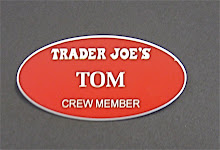The 100-Point Rating System Explained and Modified
“I spent a lot of my money on wine, women, and fast cars. The rest I just squandered.” -George Best-
THE 100 POINT RATING SYSTEM: Have you ever read those ratings from Robert
Parker, Wine Spectator, or Wine Enthusiast, and wonder how the ratings are derived?
I have, so I looked into it. If you want to rate your wines, you can impress
your friends with your enology acumen. This will be especially meaningful to all
of you Bunko ladies at your parties. You now have another activity, namely,
the rating of the wines served that day. Not that we want to put added
pressure on the hostess...
The 100-point rating system, was made popular by Robert Parker in the early 1980ʼs,
and then adopted by Wine Spectator and Wine Enthusiast, amongst others. Hundred
points is a misnomer, however, as itʼs actually a 50 point system and then 50 points are
added to the initial score.
Parker gives points for the following: First Impression/Color (max 5 pts.), Aroma/
Bouquet (max 15 pts.), Flavor (max 10 pts.), Finish (max 10 pts.), and Aging Potential
(max 10 pts.). See, the maximum points add up to 50. An additional 50 points are then arbitrarily added to the score, hence, a 100 point rating system, something we all understand. Remember school where 70 was a “C,” 80 a “B,” etc? Heck, if you scored a 50 that would be an “F” so 50 added points makes it understandable and comfortable.
Letʼs modify his system to make it user-friendly to the non-professional. After all, how
many could rate “aroma/bouquet,” which to a wine expert, are different? And most of us
probably canʼt rate “age potential,” nor do we care how much the wine will improve in
the twenty minutes it takes us to get home and pop that cork, after a hard day at work.
Also, letʼs give more points to taste because thatʼs something we understand, although
the nose and palette work as a closely knit team.
*Letʼs do it like this: Color ( max 5 pts.) look for clarity and depth; Nose (max 10 pts.)
balance and complexity; Taste (max 15 pts.) does it have fruit, spice, etc; Length/Finish
(max 10 pts.) is it a long finish, is it pleasant; and Overall Impression (max 10 pts.). Total points = 50.
Now, letʼs try it out. I just opened a bottle of Il Tarocco Chianti from TJʼs that cost $8.99.
Hmm, nice deep red color with nothing marring the clarity; 5 points. The nose is
delightful with nice fruit aromas; 8 points. The taste is a little sharp and edgy but not
unexpected, and it fills the mouth. It will open up with a little breathing; 10 points. The
length of finish is very good for a Chianti at this price and is fruity; 7 points. My
overall impression is very high for this wine; 8 points. So, total points for this wine are:
5+8+10+7+8=38, plus 50 = 88 points in the 100 point system. A very decent score for a wine at this price.
Here's a scoring sheet that I've developed for my own use. Feel free to utilize it.
Wine Tasting Scoring Sheet
Date:______________________ Where/With Whom:_______________________
Wine:_______________________________________Vintage:_______________
Price:______________________________
Where Purchased:___________________________________________________
COLOR (5 pts):________________________________________________________
NOSE (10 pts):________________________________________________________
TASTE (15 pts):________________________________________________________
LENGTH/FINISH (10 pts):________________________________________________
OVERALL IMPRESSION (10 pts):__________________________________________
Total Points:___________________ plus 50 points=_____________________
Some scoring hints:
Color: Look for clarity, depth, cloudiness. Is it the expected color for the varietal?
Nose: Balance, are there several aromas, perhaps different fruits, for example?
Taste: Is it balanced? Took much alcohol, (which makes the wine taste “hot”)? Spices,
fruit-forward? Is it more pronounced in the front, back, sides, or all over the mouth?
Length/finish: How long is the aftertaste and is it pleasant? Are there layers?
Overall Impression: Your general impression of the wine. Did it knock your socks off?
75-80=good, 80-90=above average, 90-95=excellent, 95-100= classic.
Reminds me of my safari in Africa. Somebody forgot the corkscrew and for several days we had to live on nothing but food and water.
- W.C. Fields-
Labels: Trader Joe's Wine Guy

